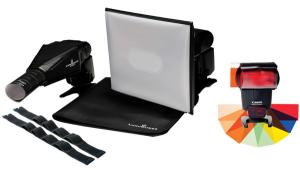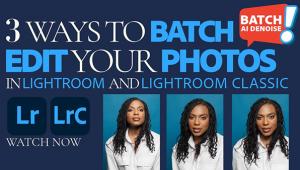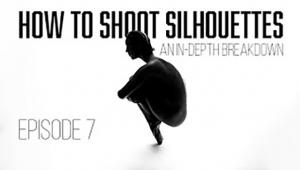How To Choose The Right Digital SLR; It’s Less Complicated Than You Thought
"...for advice is a dangerous gift, even from the wise to the wise, and all courses may run ill." --J. R. R. Tolkien
People often ask me, "What digital camera should I buy?" They then typically ignore my advice after I answer them. A person, let's call him Steve, asks me which of two cameras to purchase. Based on his needs, I suggest Model X and warn him to steer clear of Model Y because it doesn't have the features for the kinds of photographs he makes. Naturally he buys Model Y and since that's what happens most of the time, I'm not surprised but this one takes a new twist. Steve later apologizes for not taking my advice, telling me the camera did indeed perform poorly and he returned it and got camera X and is now happy.
 |
|
|
So, which digital SLR should you buy? If you already have a film SLR, start
with a digital model that uses lenses you already own. If you already have a
Canon, Minolta, Nikon, or Pentax that means you should get the Canon, Sony,
Nikon, or Pentax digital SLR that fits your budget. If you don't own a
film SLR, consider a four-thirds system camera from Leica, Olympus, or Panasonic.
Most importantly, don't forget the propinquity factor. There are two reasons
to buy the same kind of SLR your friends use: First, you can borrow their lenses,
flash, or accessories. Second, if you don't choose "their"
system they'll make fun of your decision, so why not join 'em?
Plug-In Of The Month
Correcting skin color with Photoshop is tricky because skin represents less
than 1 percent of all available colors and each race's skin has slightly
different color characteristics. For SkinTune Version 2.0, PhotoTune's
(www.phototune.com) programmers
studied skin color and collected thousands of image samples from around the
world. They took spectrophotometer measurements and compiled reference databases
for each race. Each library contains 125,000-150,000 colors with different combinations
of hue, saturation, and brightness based on each race's characteristics.
Then they improved the plug-in's interface: After selecting PhotoTune>SkinTune
from the Filter menu, two mouse clicks will find the nearest acceptable skin
color from the library and automatically correct your image. You can then use
SkinTune's tools to tweak hue, brightness, contrast, and saturation and
all your adjustments will stay within the boundaries of the library to ensure
"perfect" results.
 |
|
|
Laptop Protection
OP/TECH USA's (www.optechusa.com)
Computer Sleeve is an easy-access neoprene pouch that protects your laptop or
notebook computer against impact as well as the elements. This soft, durable
neoprene sleeve protects the computer against dust, moisture, and impact and
stretches to fit cables and power supplies. The slim design fits easily into
a briefcase or backpack. The closure flap features a leather tab that secures
with touch fasteners so there's no fumbling with zippers that can break
or jam. The sleeve's interior will accommodate a slim notebook or tablet
computer and two versions are available to fit models with 15" or 17"
screens.
 |
Contrast Plug-In
Pixel Vistas' PhotoLift is a Windows-only Photoshop compatible plug-in
that enhances local contrast. It uses a nonlinear filtering technique to minimize
artifacts and lets you strengthen detail and texture in a photograph without
changing overall tonality. The filter operates by separating the image into
small-scale (detail) and large-scale (base) components. Unlike traditional methods
of local contrast enhancement, strong edges in the original image are not part
of the detail component. This allows detail to be manipulated without producing
unnatural halos or artifacts near edges. Pixel Vistas recommends PhotoLift for
fine art and landscape photography where it can cut through atmospheric haze,
emphasize form and structure in clouds, and bring out fine detail wherever it's
lacking. Sounds like a digital UV filter to me. It costs $45, but a free evaluation
copy can be downloaded from the company's website (www.pixelvistas.com).
 |
One Monitor; Two Computers
Belkin's (www.belkin.com)
$149.99 Flip DVI-D lets you share your keyboard, mouse, speakers, and DVI monitor
between two computers, keeping your desktop free of extra peripherals and cables.
Mac users can use their Apple Cinema Display for both their notebook or desktop
computers. The Flip DVI-D sits on your desk and easily switches between computers
with a simple press of the remote button. It supports both single link (1920x1200)
and dual link (2560x1600) video modes and provides full support for all USB-based
Mac OS and Windows-based computer keyboards, including those special function
keys. The Flip DVI-D features a two-color LED that indicates which computer
Flip is accessing and comes with a three-year warranty.
 |

















































